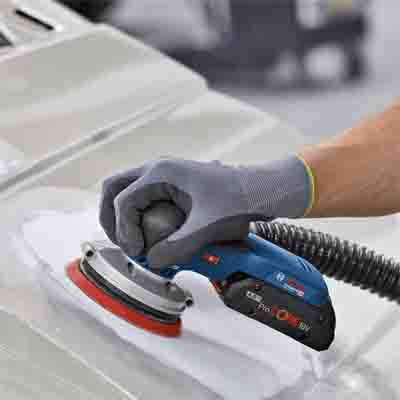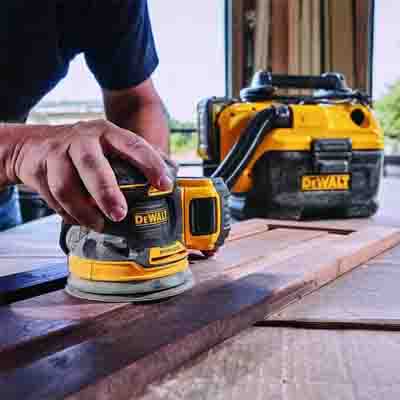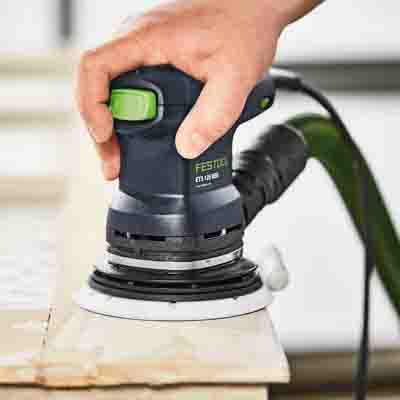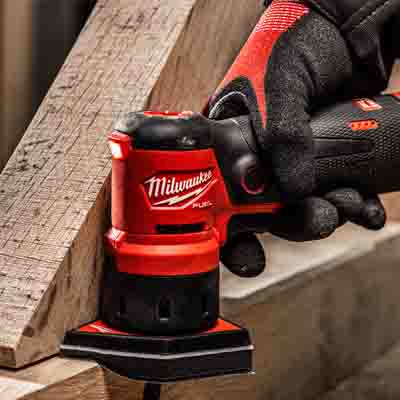Cordless Sanders
-

Bosch Cordless Sanders (1)
-

Dewalt Cordless Sander (1)
-

Festool Cordless Sander (1)
-

Milwaukee Cordless Sanders (1)
Value On Cordless Sanders
Cordless sanders are versatile and efficient power tools designed to streamline the process of sanding various surfaces, making them an indispensable addition to any DIY enthusiast or professional woodworker’s toolkit. These innovative tools are prized for their mobility and convenience, as they eliminate the need for cumbersome cords and power outlets, allowing you to work freely in any location. Cordless sanders come in various types, including orbital, random orbital, and detail sanders, each tailored to specific tasks. The orbital sander is ideal for removing rough surface imperfections and quickly smoothing large, flat surfaces, while the random orbital sander excels at fine finishing work, preventing swirl marks and providing a polished result. Detail sanders, on the other hand, are perfect for reaching tight spaces and intricate corners.
When considering the purchase of cordless sanders, it’s essential to weigh various factors to ensure you select the right tool for your specific needs. Cordless sanders are a valuable addition to any DIY enthusiast or professional craftsman’s toolkit due to their convenience and versatility.
Types Of Cordless Sanders
Best random orbital sander
Random orbital sanders are one of the most versatile cordless sanders available. They feature a round sanding pad that moves in both a circular and orbital motion simultaneously. This dual-action motion helps prevent swirl marks on surfaces, making them ideal for finish sanding and smoothing tasks. Random orbital sanders are excellent for preparing surfaces for painting or applying finishes.
Buy orbital sander online
Cordless orbital sanders have a square or rectangular sanding pad that moves in a simple circular motion. They are well-suited for quickly removing material, leveling surfaces, and removing rough spots. These sanders are especially useful for sanding large, flat areas like tabletops and doors.
Top-rated detail sander
Detail sanders, also known as delta sanders or corner sanders, are designed for precision work in tight spaces and corners that larger sanders cannot reach. They have a pointed triangular sanding pad that excels at fine detail work, such as sanding intricate carvings, moldings, or furniture joints.
Belt sander with dust collection
Cordless belt sanders feature a continuous sanding belt that moves in a loop. They are known for their aggressive material removal capabilities and are typically used for heavy-duty tasks like removing paint, smoothing rough lumber, or leveling large, flat surfaces. Belt sanders are less common in cordless variants due to their higher power requirements.
Buy sheet sander online
Also known as finishing sanders, sheet sanders have a rectangular sanding pad that accepts standard rectangular sandpaper sheets. They are excellent for fine finishing work, including sanding between coats of paint or varnish. Sheet sanders are known for their precise control and ability to produce smooth, even surfaces.
Multi-tool with attachments
Cordless multi-tools, such as oscillating tools, offer a versatile sanding function among various other attachments. They have a small oscillating head that can accept sanding pads, making them suitable for sanding, cutting, and scraping tasks. Multi-tools prize for their ability to handle a wide range of applications with the right attachments.
Top-rated polisher/sander
Cordless polishers and sanders design for automotive and detailing work. They equipp with polishing pads or sanding discs and use for buffing and smoothing automotive surfaces, including paint and clear coats. They are essential for car enthusiasts and detailing professionals.
Features of Cordless Sanders
- Battery-Powered: Cordless sanders power by rechargeable lithium-ion batteries, providing mobility and flexibility to work in various locations without the need for a power outlet.
- Variable Speed Control: Many cordless sanders come with variable speed settings, allowing you to adjust the sanding speed to match the task and material, providing greater control and precision.
- Dust Collection Systems: Some models have efficient dust collection systems that help keep your work area clean by capturing dust and debris as you sand. This not only enhances safety but also improves air quality.
- Ergonomic Design: Cordless sanders often design with ergonomics in mind, featuring comfortable grips and lightweight construction to reduce operator fatigue during extended use.
- Quick Paper Changes: Many cordless sanders equipp with tool-free paper change systems, making it easy to switch sandpaper grits or replace worn-out sanding sheets.
Benefits of Cordless Sanders
- Mobility: The cordless design allows you to work in remote locations or outdoors, providing greater flexibility and convenience.
- Efficiency: Cordless sanders are efficient and time-saving tools, making sanding tasks faster and more effective compared to manual sanding methods.
- Versatility: There are various types of cordless sanders available, each suitable for different applications, including finish sanding, rough sanding, and detail work. This versatility makes them suitable for a wide range of projects.
- Reduced Tripping Hazard: With no cords to worry about, there’s a reduced risk of tripping over power cables, enhancing safety in the workplace.
Safety Considerations of Cordless Sanders
- Eye Protection: Always wear safety glasses or goggles to protect your eyes from flying debris and dust while sanding.
- Dust Mask or Respirator: If your cordless sander lacks effective dust collection, wear a dust mask or respirator to prevent inhalation of fine dust particles, which can be harmful to your respiratory system.
- Ear Protection: Depending on the noise level of your sander, consider wearing ear protection to prevent hearing damage during prolonged use.
- Work Area Ventilation: Ensure proper ventilation in your work area, especially if you are working indoors. Adequate airflow helps disperse airborne dust and keeps the workspace comfortable.
- Secure Workpiece: Always secure your workpiece firmly in place to prevent it from shifting or vibrating while sanding. This minimizes the risk of accidents.

















































